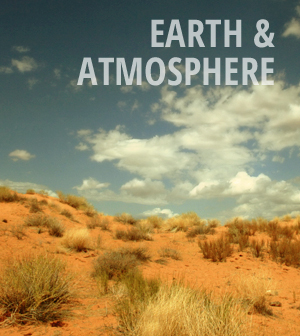Drought increasing the amount of dust blowing across the U.S. West

One of the major effects of the ongoing drought in the Western U.S. was an increase in the dust blown across states like Wyoming, Utah and Montana. No one knew for sure exactly how much more dust was in the air, but residents of western states knew from personal experience that it was more than usual.
To confirm those suspicions, researchers at the University of Colorado set out to quantify the amount of dust, coming at the question from a surprising angle. Soil contains a lot of calcium, so they used changes in soil calcium content to measure soil transfers, and thereby dust, between areas. Knowing how much soil is moved could help future dust mitigation efforts and protect visibility, which is regulated under the Clean Air Act.
The amount of calcium that enters the atmosphere and then dissolves into rain is recorded by the National Atmospheric Deposition Program. It was through data collected by the program that the Colorado team got its start. They reviewed site data from 175 locations recorded over the course of 17 years and found that calcium deposition went up at 116 of them.
The NADP uses Aerodyne automated rainfall collectors that take in water as it rains. Many are installed in wilderness areas. After samples are stored, they’re retrieved and then analyzed in a laboratory.
Drought was an obvious consideration in the study, according to Jason Neff, study coauthor and associate professor of geological sciences at the University of Colorado.
“Drought leads to dust because it kills off vegetation, which leaves soil exposed and then the wind carries it away,” Neff said. “Half of the increase can be explained by drought and high wind events. The other half is hard to pin down, but we suspect it’s from human activity.”
The researchers also considered urban development, dirt roads and poor farming techniques. Their effects include soil erosion and fertility loss when wind carries the soil and its nutrients away. Neff says they can also increase runoff.
“When dust lands on snowpack, you can imagine going from lighter to darker, the snow warms faster and it melts quicker,” said Neff. Snowpack is an important water source for the West and its faster melting could foretell water shortages, as experts have estimated snow will melt a full 16 days sooner in mountains surrounding Los Angeles.
Measuring the calcium deposition isn’t enough, Neff says. It’s an incomplete figure, because much of the calcium isn’t dissolved in rain. A direct measurement of the particles in the atmosphere would be the only way to measure exactly how much dust is in the air.
“We actually already do this, 2.5 PM (particulate matter) and 10 PM are routinely measured,” said Neff. “It’s just that we don’t measure total counts at the same time.”
In related research, Neff has used Thermo atmospheric particulate samplers. They have quartz or glass filters that screw down over the top. A vacuum pump pulls air in and the filter collects whatever is in the louvered hood. So he has an idea as to how simple it might be to collect the data, which would be good for those in the West.
“It’s completely anecdotal,” said Neff. “But talking to people in Utah, Arizona or Colorado, you’ll hear them say, ‘I grew up in this area, but I don’t remember it being like this before.’”





0 comments